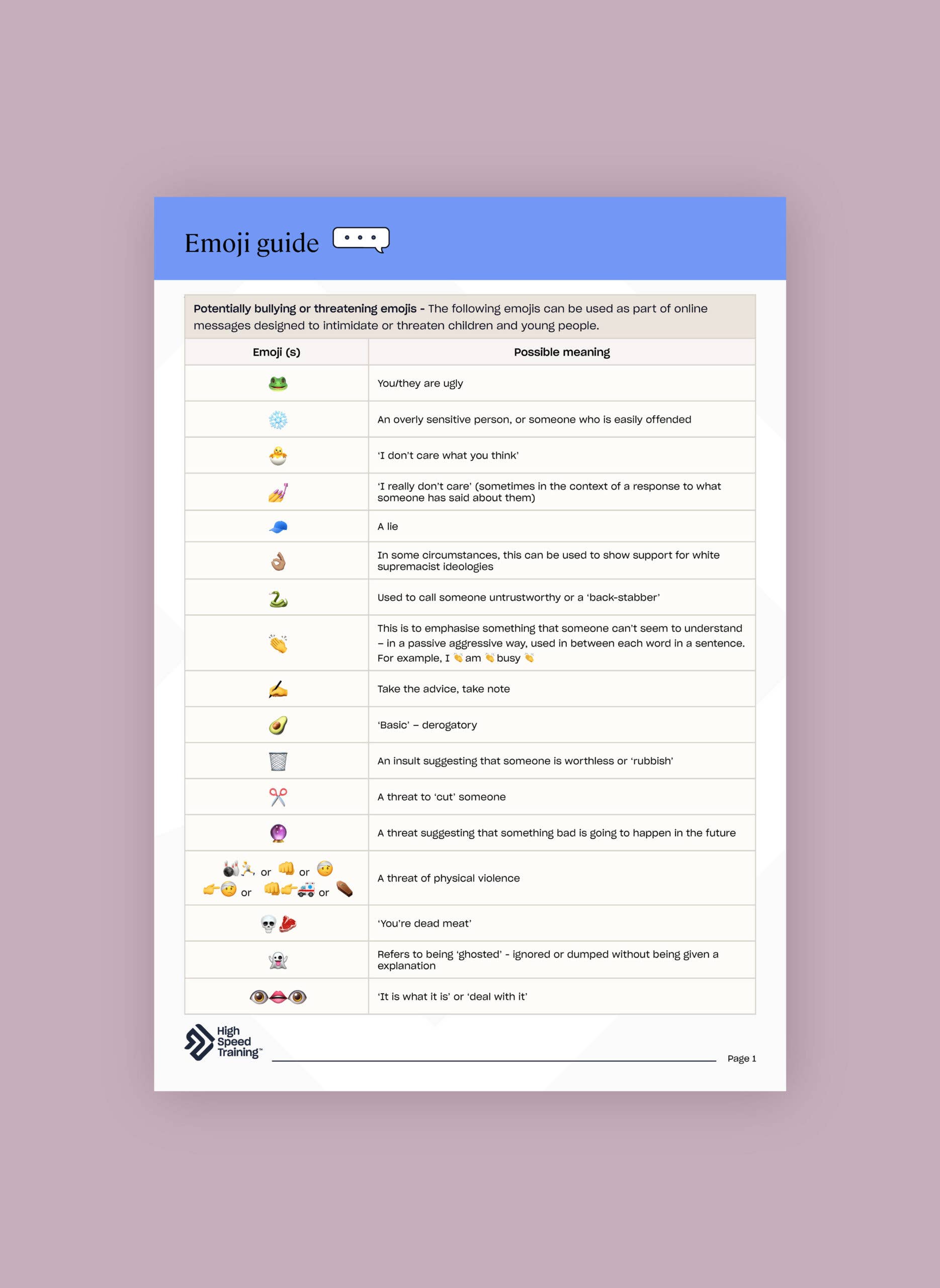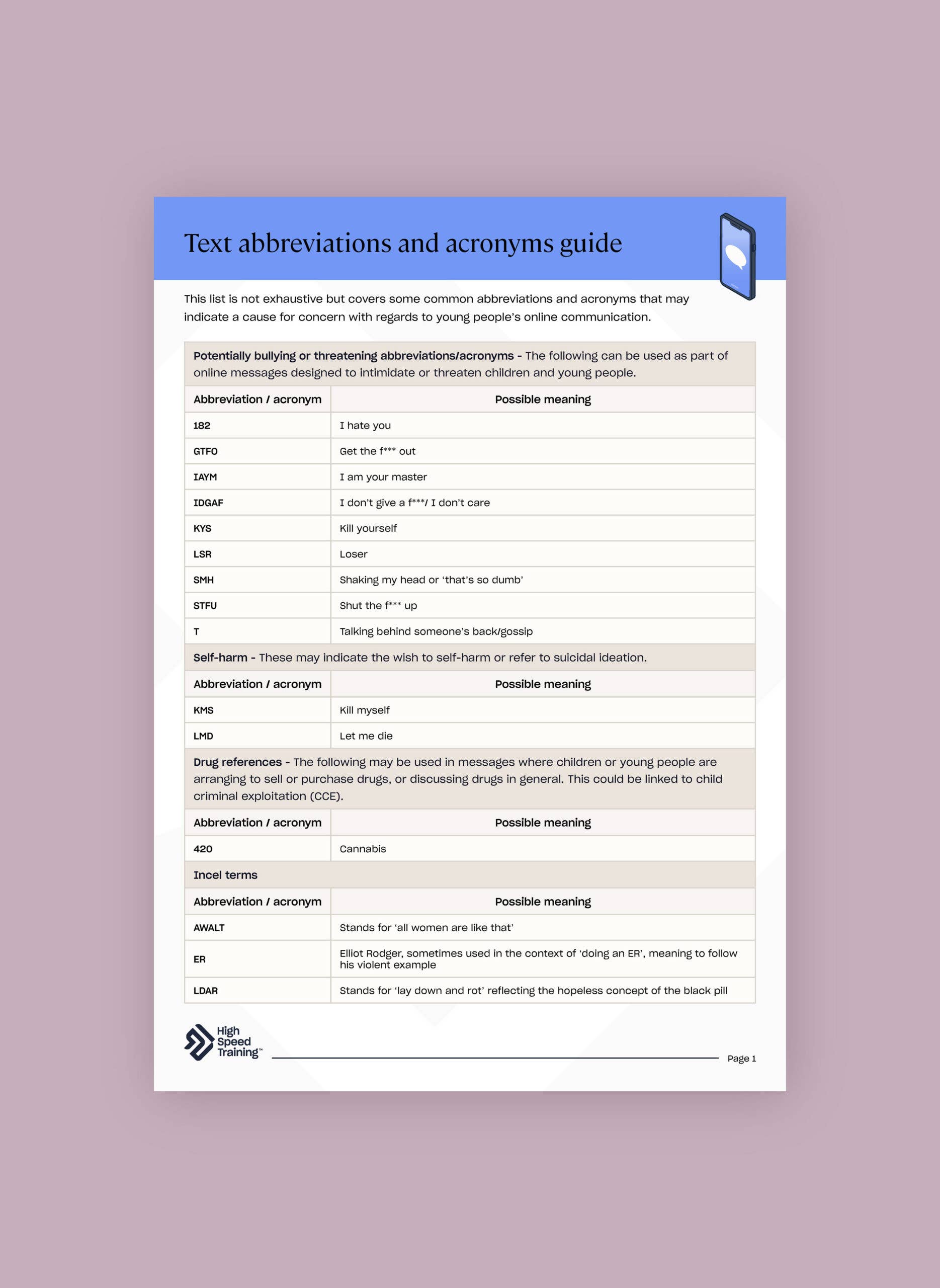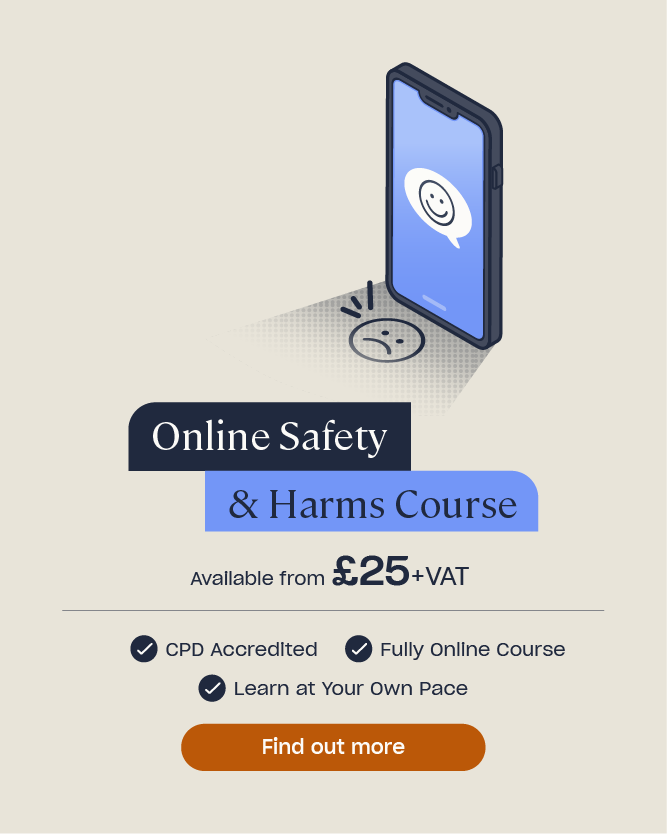A Guide to Emojis and Texting Abbreviations
Online communication enables us to send and receive information quickly, then respond almost instantly. Texts, instant messages, emails and social media posts or comments now form a large part of most people’s personal and professional communication.
These formats are generally short, and abbreviations and emojis have become a popular way to help convey messages quickly, or add tone or humour to a written message. However, emojis and abbreviations are forming a fast-growing hidden language amongst young people – of which many adults are completely unaware. This can bring a variety of complex safeguarding risks, so it is important that anyone who works with, or cares for, young people is aware of the potential hidden meanings of these messages.

In this article, we will look at some of the common alternative meanings for emojis, and some text abbreviations that might indicate a safeguarding risk. We have also produced a downloadable emoji guide for parents and teachers, alongside an abbreviations download.
What is the Secret Emoji Language?
This is certainly true – but it is not always clear which words. Emojis have become a part of our everyday communication. Consider this scenario. You receive a text message which reads, ‘I am having the best day.’ Think about how your understanding of these words might change if they were followed by a star-struck or rolling eyes emoji. The words are exactly the same but the meaning has changed. A single emoji has conveyed whether those words should be taken at face value or not, and which emotion might lie behind them.
As emojis have become more frequently used, a general shared vocabulary has built up (although as with all non-verbal communication there are likely to be cultural differences with regards to meaning). Generally, emoji use is usually based on quite literal interpretations. For example, you would use a ‘thumbs-up’ or a ‘smile’ in the same way as you would in in-person communication.

However, the secret emoji language refers to a shared understanding of hidden meanings – predominantly between teenagers and young people. Here emojis, or combinations of emojis, act as code. Young people have always used different slang to older generations who may not have always understood the terms. However the secret emoji language is often used with the intention of keeping those meanings hidden from adults.
Adults may see a flurry of seemingly cute pictures pop up on a child’s phone and not realise that they are potentially viewing racist comments, a drug deal, a sexual proposition or online bullying. The double meaning can also allow deniability if questioned – for example, a child sending a picture of a frog (which can mean ugly) to taunt a peer could claim they were simply sending a fun picture, if challenged.
Emojis Symbols List
We have produced a visual guide to the hidden meaning of some of the most commonly used emojis which you can download here.
Warning: This PDF contains references to self-harm, drug use and sexual activity.
What are Text Abbreviations?
Text abbreviations work in a similar way to emojis. They are quick ways to convey a phrase or sentence. Abbreviations and acronyms have been used since before online communication, but because they are short and snappy they suit the medium of texts, instant messages, emails, etc., very well.
Abbreviations also rely on shared understanding, which tends to build over time as more people adopt them. For instance, today, the well-used acronym LOL is commonly understood to mean ‘laugh out loud’ to show amusement, but some people use the abbreviation incorrectly – believing it to mean ‘lots of love’, which can lead to some potentially embarrassing or unintentionally offensive communications.

There are a raft of abbreviations and acronyms that parents, teachers and other adults may not realise are conveying potentially concerning messages – and are used by young people in a similar way to the secret emoji language. You may see a jumble of letters and dismiss it, but the child may have received a message threatening them with physical violence, for example.
Texting Abbreviations List
We have produced a guide to the hidden meaning of some of the most commonly used abbreviations and acronyms, which you can download here.
Warning: This PDF contains references to self-harm, drug use and sexual activity.
Safeguarding Tips for Parents and Teachers
The following tips with regards to these ‘hidden languages’ could help you safeguard the children in your care.
Build your own awareness
By recognising that these symbols and abbreviations can carry a hidden meaning, you are more likely to be able to spot communications that may be concerning. If these messages are forming part of a safeguarding issue – for example a young person is experiencing child on child abuse, bullying, radicalisation or child sexual or criminal exploitation – then you will also be likely to spot indicators of these types of abuse.

Education professionals should always follow the safeguarding procedures in your settings, for any concerns relating to the children in your care.
Want to Learn More?
Our range of Safeguarding Courses, including Online Safety and Harms, Preventing Radicalisation and Extremism and Harmful Sexual Behaviour in Schools, can help you to effectively recognise and respond to safeguarding concerns.
Build into the curriculum
Online safety, including navigating online relationships, is a core part of the statutory programmes of study in many curriculum areas. Within relevant lessons, you can include reference to how emojis and abbreviations are sometimes used by people to make inappropriate contact – without, of course, going into detail about the meanings conveyed. For example, a bullying message conveyed through emojis should be taken as seriously as one written in words, or spoken. Children should feel empowered to seek support if they are receiving concerning communications of any type, and should be explicitly taught how to do so.
Keep the conversation open
As with all online safety matters, parents should try to aim for an ongoing, age-appropriate, open conversation with their children. Your child’s online life, and any accompanying issues, will change over time, so it is vital that you don’t have a one-off ‘online safety talk’ and leave it there. Make sure that children and young people are aware of the risks that come with online activity and know what to do if they are experiencing online harm.

Don’t be afraid to start a conversation about this topic. ‘That’s a fun emoji/odd abbreviation, what does it mean?’ might be met with a range of responses, but the way your child responds to you could indicate whether there is an issue that needs following up.
Remember, sometimes a frog is just a frog
Whilst being mindful of the potential risk, it is important to remember that often children, especially younger children, will just be using the emojis for their regular meaning – or because they think they are funny pictures.
In an ever-changing online world, it is important that everyone with a responsibility to safeguard children keeps their knowledge of potential risks and harms up to date. For education professionals, this is a statutory requirement. We hope that the information and resources in our emoji and texting abbreviations guide will help you to feel confident in spotting potentially worrying emojis or abbreviations.
Further Resources:
- Parents’ Guides to Social Media Apps
- How to Teach Children About Healthy Relationships
- Prevent Duty Quiz
- Parents’ Guide to Twitter
- The Prevent Strategy: Practical Tips for Managing Controversial Topics in the Classroom
- Online Safety & Harms Training













